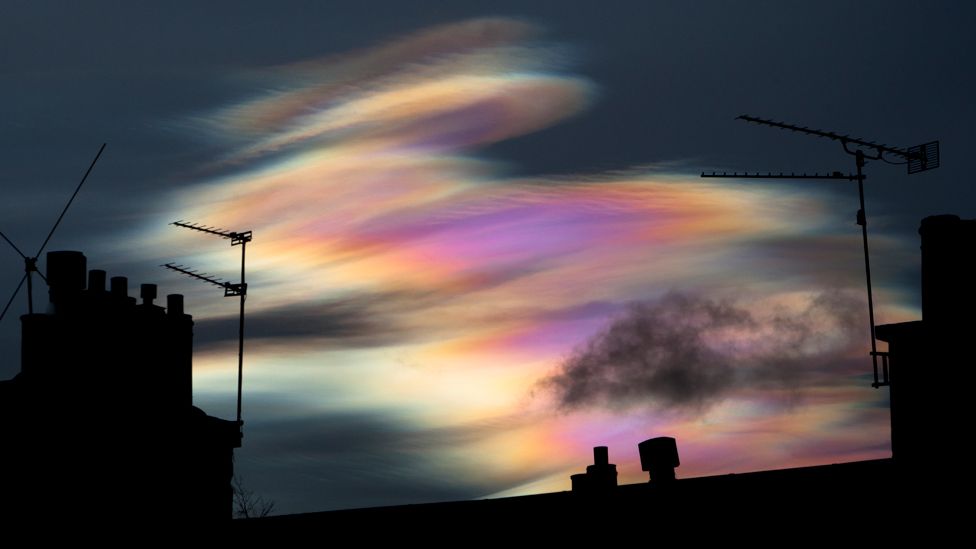Colourful nacreous clouds spark aurora borealis reports
- Published

Brightly coloured clouds that form in Earth's lower stratosphere appear to have been mistaken for another phenomenon.
Lancaster University's AuroraWatch UK said it had received reports of sights of the aurora borealis.
But, because conditions have not been right for the aurora, the organisation suspects people have been seeing nacreous clouds.
The clouds have been visible in the past few days over parts of the UK.
Also known as mother of pearl clouds, they have been seen from various places in Scotland including Aberdeen, Aviemore, Dundee, Dunfermline, Inverness and Perth.
Nacreous clouds form in the lower stratosphere over polar regions when the sun is just below the horizon.
BBC Scotland weather presenter Christopher Blanchett said the effects of storms Gertrude and Henry may have heightened the chances of seeing the clouds.
He said: "Iridescent nacreous clouds are as captivating as they are rare.
"These eye-catching rainbow coloured clouds form in the Earth's stratosphere at around 70,000ft, way above where other clouds are normally found and in much colder air, around -78C.
"Usually it is far too dry at this height for clouds to form, but during the polar winter the temperature can drop low enough to promote the cloud's development.
"Here in Scotland, the recent storms have probably helped too, with strong winds driving moisture up into the stratosphere.
"Their colour comes from ice crystals refracting the sun's rays to give the rainbow effect."
He added: "They're most vivid before dawn and after sunset, as they're in sunlight longer due to their altitude. They're sometimes referred to as 'mother of pearl' clouds or otherwise known as polar stratospheric clouds."